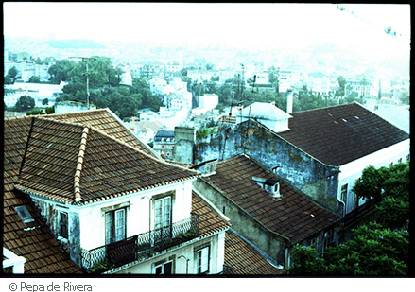Photographic explosion
© Guillermo Labarca
 In the northern hemisphere, we have just returned home from summer vacations. We have seen many people taking photographs, either with cameras or smartphones. Even those who have not gone on holiday have seen tourists in their town photographing every monument, view, bridge, nook and cranny. After all, as S. Sontag says, tourism and family are the great drivers of photography. There are those who argue that this photographic explosion is a positive phenomenon because it creates interest in visualizing and in photography. It is undeniable that societies are compulsively becoming photographers’ societies. We post over two hundred fifty million photographs on Facebook each day, Instagram is visited more and more, smartphones shoot photographs like repeating firearms.
In the northern hemisphere, we have just returned home from summer vacations. We have seen many people taking photographs, either with cameras or smartphones. Even those who have not gone on holiday have seen tourists in their town photographing every monument, view, bridge, nook and cranny. After all, as S. Sontag says, tourism and family are the great drivers of photography. There are those who argue that this photographic explosion is a positive phenomenon because it creates interest in visualizing and in photography. It is undeniable that societies are compulsively becoming photographers’ societies. We post over two hundred fifty million photographs on Facebook each day, Instagram is visited more and more, smartphones shoot photographs like repeating firearms.
Possibly, this explosion will have positive effects in some areas but it also has a very negative one, namely that people will avoid seeing. The attitude of those who take many of these photographs is to look and hide their surroundings to store it in a memory that will rarely be opened again. The act of shooting these pictures prevents perceiving the environment directly, that is, it makes it harder to experience reality, its colors, smells, temperature and the emotions caused by them, because looking isn´t seeing. What is more, for some reality only exists after it is photographed.
As has been said: in future societies, those who ignore photography will be the illiterates, not those who can´t read. But, how many of those who take pictures know how to read their own photos? Not to mention photos taken by others. Thus, the question remains of how to acquire the tools to decipher the images that besiege us.
Of course, there are also people who take pictures that do register their surroundings, people who know how to see and communicate what they are seeing. Koudelka, who did know how to see, said about good photographs: “For me, these are images you cannot forget when you have seen them, that allow onlookers to make up different stories, to project themselves. They are not reports, but one single image that stays with you. Also, I don’t think there are great photographers but great photographs; these are a kind of miracle, something that rarely happens.”

